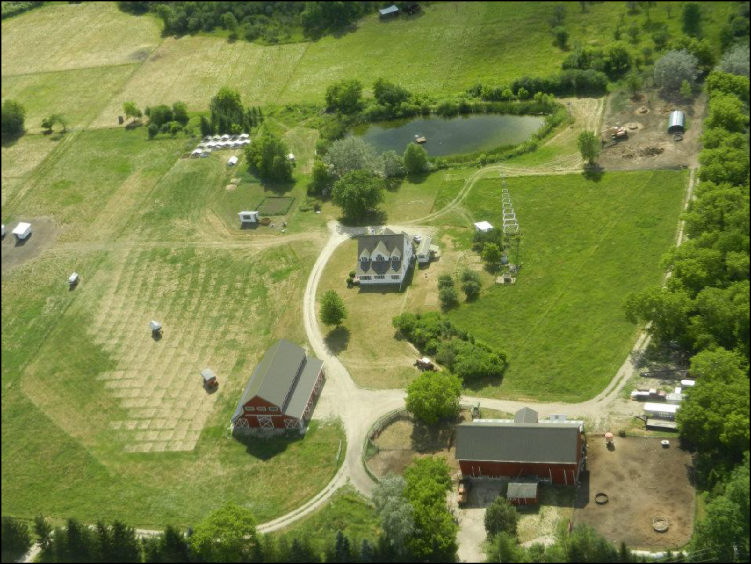Solar Harvest Farm Steve & Michelle Heyer Richie, Sheri & Sarah 7432 Marsh Road, Waterford, WI 53185
Phone: 262-662-5278 · Email: solarharvestfarm@yahoo.com Website: www.solarharvestfarm.com
On a normal year, the end of June typically marks the end of the wetter, cooler phase of forage growth - the Honeymoon on a pasture-based farm. By this time we would have rotated the cattle through the paddocks at least twice. Instead, we made one rotation, culled 25% for a scheduled harvest date, then placed the remainder of the herd back in the woods, which cannot be seen above the top of this photo. The 2012 season included an unusually warm March followed by a cold April. We began grazing the upper fields nearest the buildings in late March. As this picture reveals, the drought allowed almost no regrowth from April through June (and well into late July). Note the checkerboard from the poultry shelters center-left. These squares normally regreen after 7 days. What little green exists is only because of a tedious amount of irrigation attempted. In the upper left fields you’ll notice parallel strips. The early March growth created an abundance which allowed strip-grazing tall forage with 3x/day advancement. Were it not for the weird March explosion of greenery, we would have run out of pasture 3 weeks sooner. (Of course the orchard farmers paid the price with frozen buds in April, effectively killing their 2012 crop.) Also revealed is the last remnants of forage available for the pigs. The angled forage cuts made lower left, ahead of the poultry-grazed area as well as right and left of the pond are all depleted. Once week after this picture, the grazing flywheel was completely shut down. Soil microbiology went deep, dead or dormant. The time necessary for regrowth was lost. Even when rains finally arrived in late July, it would take a month to bring the grazing flywheel back up to a sustainable level.



